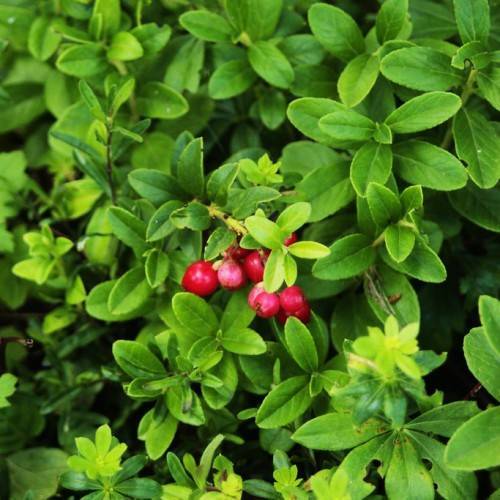
American cranberry
Vaccinium macrocarpon
Cycle:
Perennial
Watering:
Frequent
Hardiness Zone:
3 - 7
Flowers:
Flowers
Sun:
Full sun Partial sun
Soil:
Sandy Loamy
Fruits:
Fruits In Autumn Ready In Fall
Edible:
Yes
Leaf:
Yes
Growth Rate:
Moderate
Maintenance:
Moderate
Drought Tolerant:
Yes
Salt Tolerant:
Yes
Care Level:
Medium
watering
American cranberry (Vaccinium macrocarpon) is a hardy shrub that prefers moist, acidic soil and full sun. It should be watered deeply and consistently, either with rain or irrigation. In order to keep the soil moist, water 1 to 2 inches weekly during the growing season. Make sure, during dry spells, to water the cranberry plant more frequently, approximately every 3-4 days. During the winter months, when the plant is dormant, water only once every 1 to 2 weeks. Because of the shallow roots, avoid soaking the cranberry plant, as this can lead to root rot.
sunlight
American cranberry (Vaccinium macrocarpon) plants require at least 8 to 10 hours of natural sunlight per day. This would mean direct sunlight for most of the day during middle summer when days are long. During the spring and fall months, American cranberries should receive full sun, but will also do okay in partial shade. During winter months, these plants may fare better with slightly less sun, depending on the specific climate and weather conditions. These plants can do well in regions that receive both hot and cool temperatures, making them hardy and relatively easy to care for.
pruning
American cranberry (Vaccinium macrocarpon) should be pruned annually during the winter months. Pruning should occur each year after the plants have finished fruiting and dried off. Begin by removing any dead, diseased, or damaged branches, as well as any spindly or crowded growth. Stems that cross into each other should also be removed. This helps the plant to remain open and vigorous. Prune only the weak, spindly branches, and any stem that are blocking the sunlight from entering the interior of the plant. To encourage bud development, prune away a third of the old growth after the plant blooms in April or May. Finally, deadhead the flowers as they fade, allowing the plant to store more energy into forming fruit rather than more blooms.
